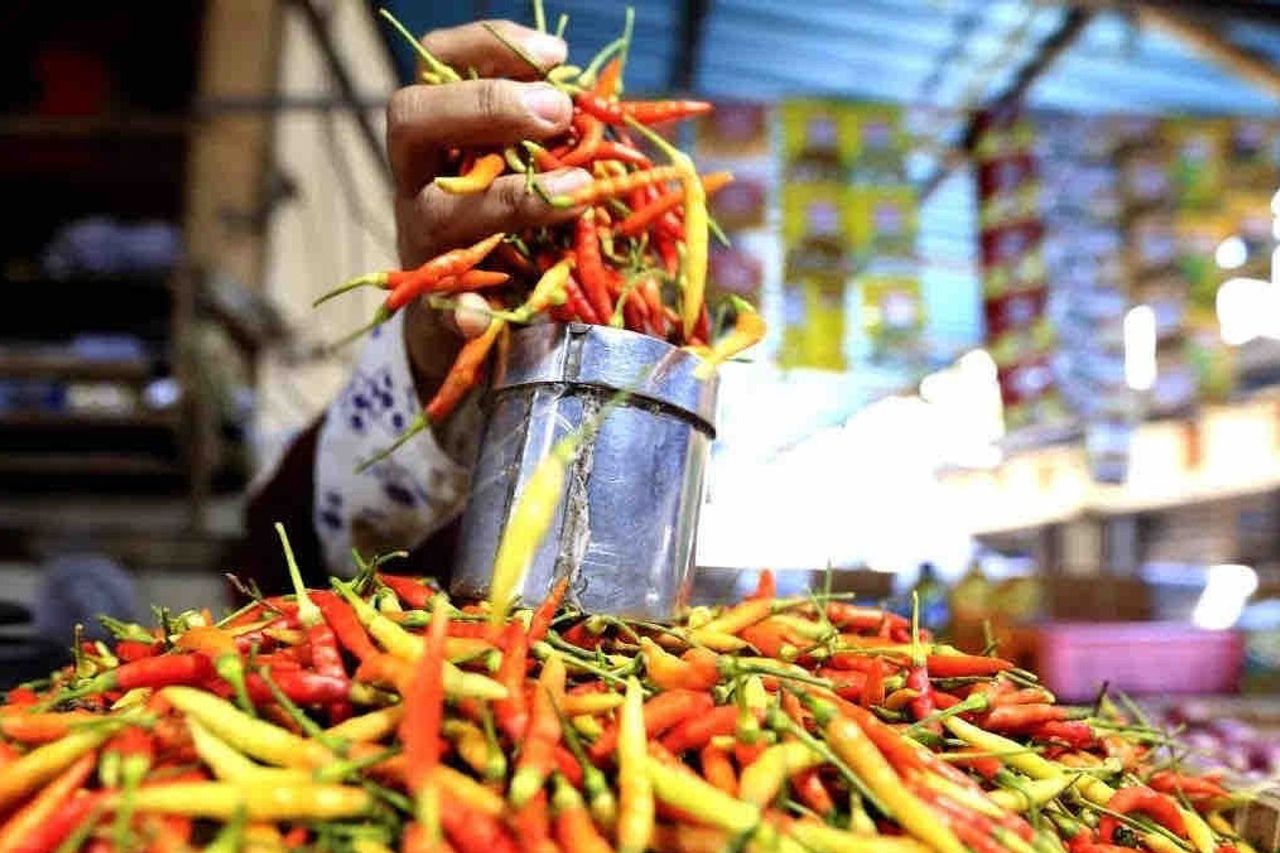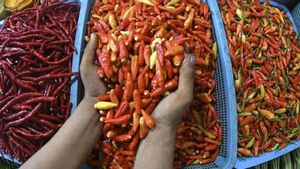The Ministry Of Agriculture Unloads The Cause Of The High Price Of Red Rawit Chili

JAKARTA - The Ministry of Agriculture (Kementan) noted that the price of red cayenne pepper has increased significantly in the last two weeks.
One of the reasons is that chili plantations in the central area are flooded.
Director of Vegetables and Drug Plants of the Ministry of Agriculture Andi Muhammad Idil Fitri said the national average was IDR 73,640 per kilogram (kg) at the consumer level.
Meanwhile, the price at the farmer level is IDR 52,310 per kg.
Andi said that the price was far above the purchase reference price (HAP). Where HAP at the consumer level ranges from Rp40,000 to Rp57,000 per kg. Meanwhile, HAP at the farmer level is Rp25.000 to Rp31,500 per kg.
"Indeed, the average weekly price of cayenne pepper, these two weeks have rolled up significantly, both for consumer prices and at the farmer level," he said, quoted on Tuesday, January 14.
Andi said, there were seven causes of the increase in the price of red chili pepper. First, extreme weather which caused a number of chili centers to be flooded.
The locations of the affected areas include in Wajo Regency, Sidrap Regency, Sukabumi Regency, Temanggung Regency and other centers located in the lowlands. The impact of this flood has resulted in the potential for production loss reaching 70 to 87 percent," he said.
Second, continued Andi, high rainfall in almost all central areas. This condition causes a decrease in productivity by 10 to 20 percent.
"This rain intensity anomaly interferes with the chili harvest pattern," he said.
Third, there was a landslide that damaged the chili area, such as in Sukabumi Regency. Fourth, strong winds that caused damage to chili planting areas, such as in Semarang Regency.
Fifth, attacks by plant-guided organisms (OTP) that increase due to weather anomalies. The increase in OPT attacks generally occurs evenly throughout the center area.
Sixth, continued Andi, the low selling price of red cayenne pepper some time ago caused farmers not to care for plants that were ready to harvest.
"Farmers also change many commodities that are being worked on, especially new farmers who are not used to growing red cayenne pepper. This has an impact on reducing the area of chili planting," he said.
SEE ALSO:
Finally, continued Andi, the anomaly of the harvest period or the expiration of the chili harvest period in a number of central areas. As in the East Java region, which is currently entering a harvest period.
"Meanwhile, in several other central areas, it has not yet entered the main harvest period," he said.

